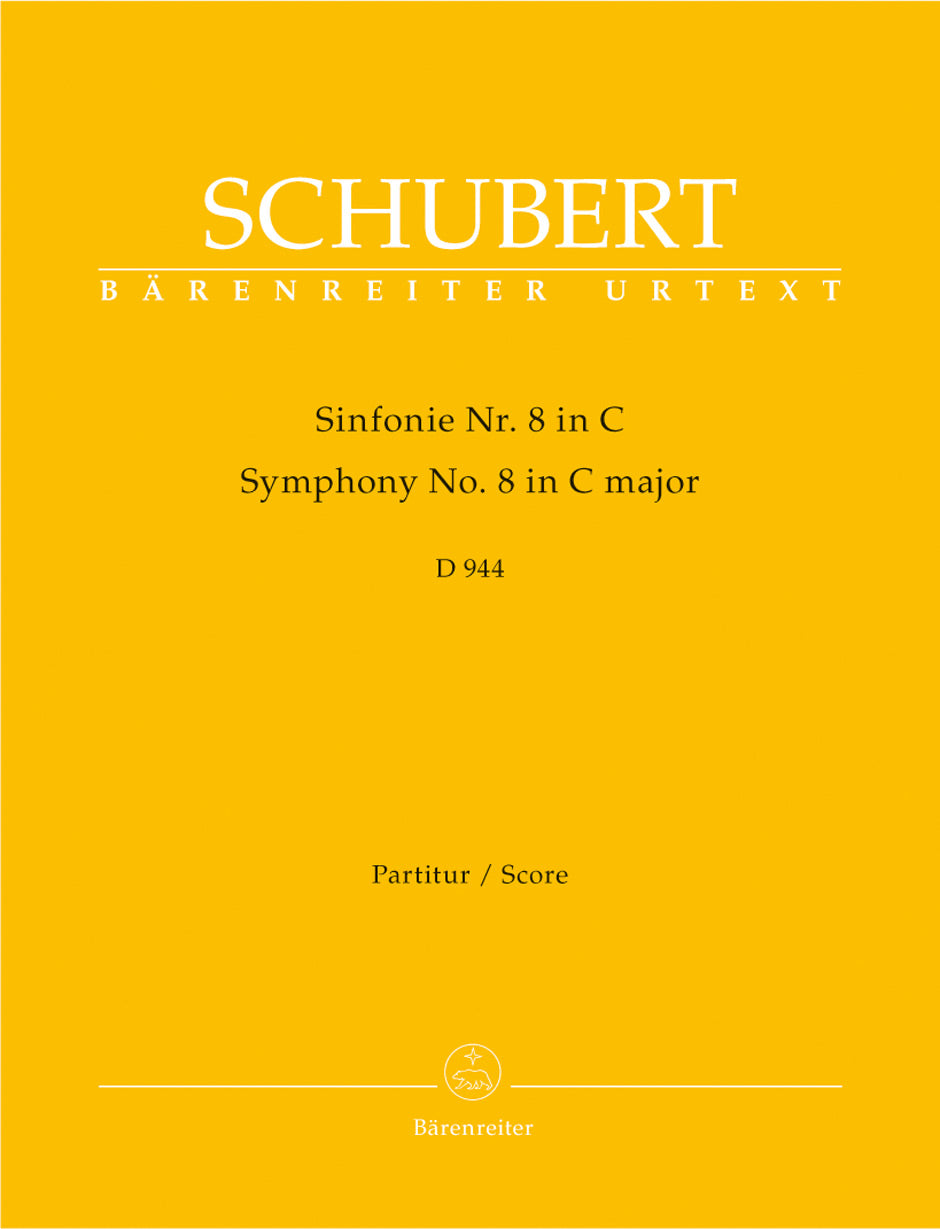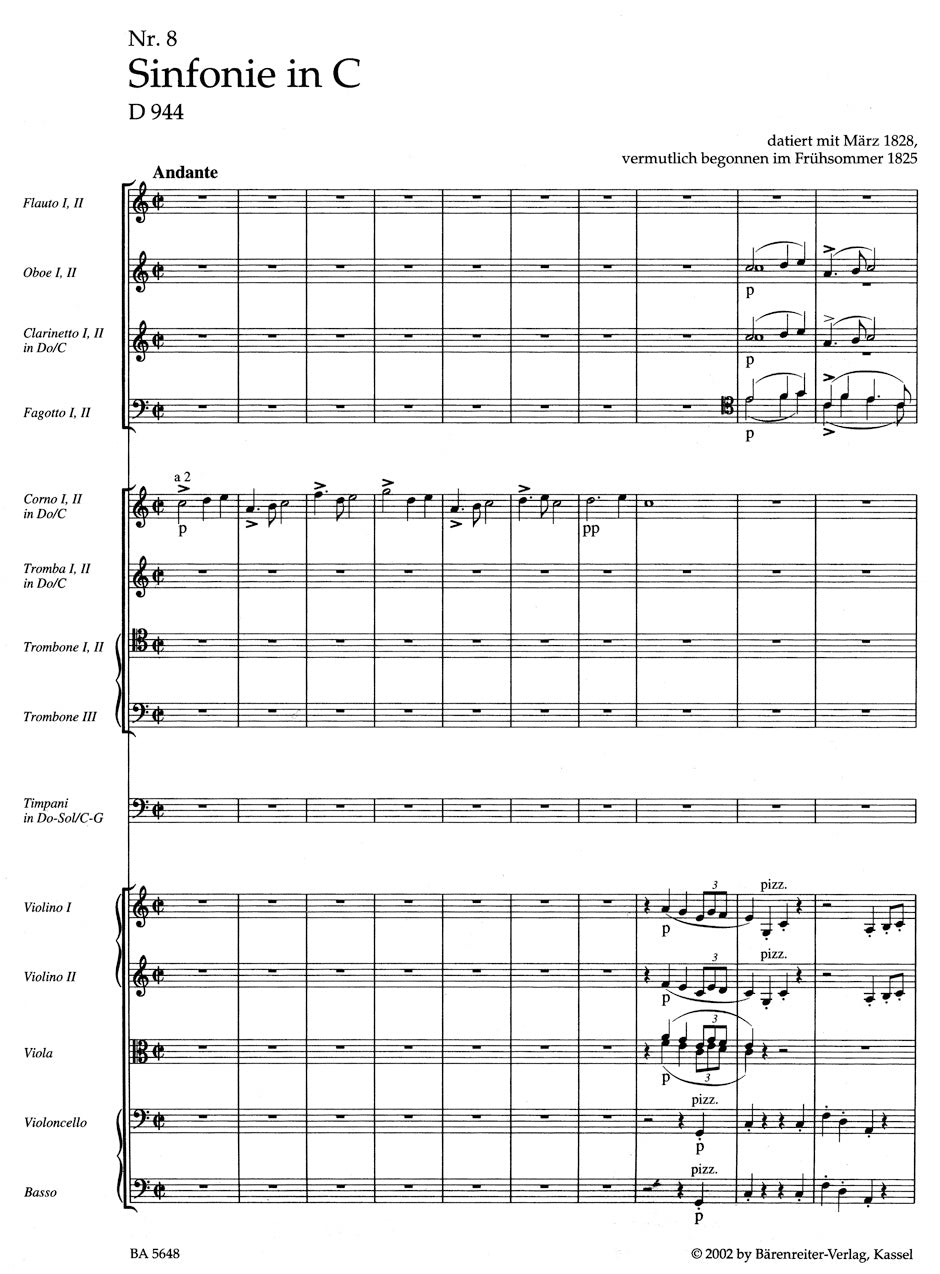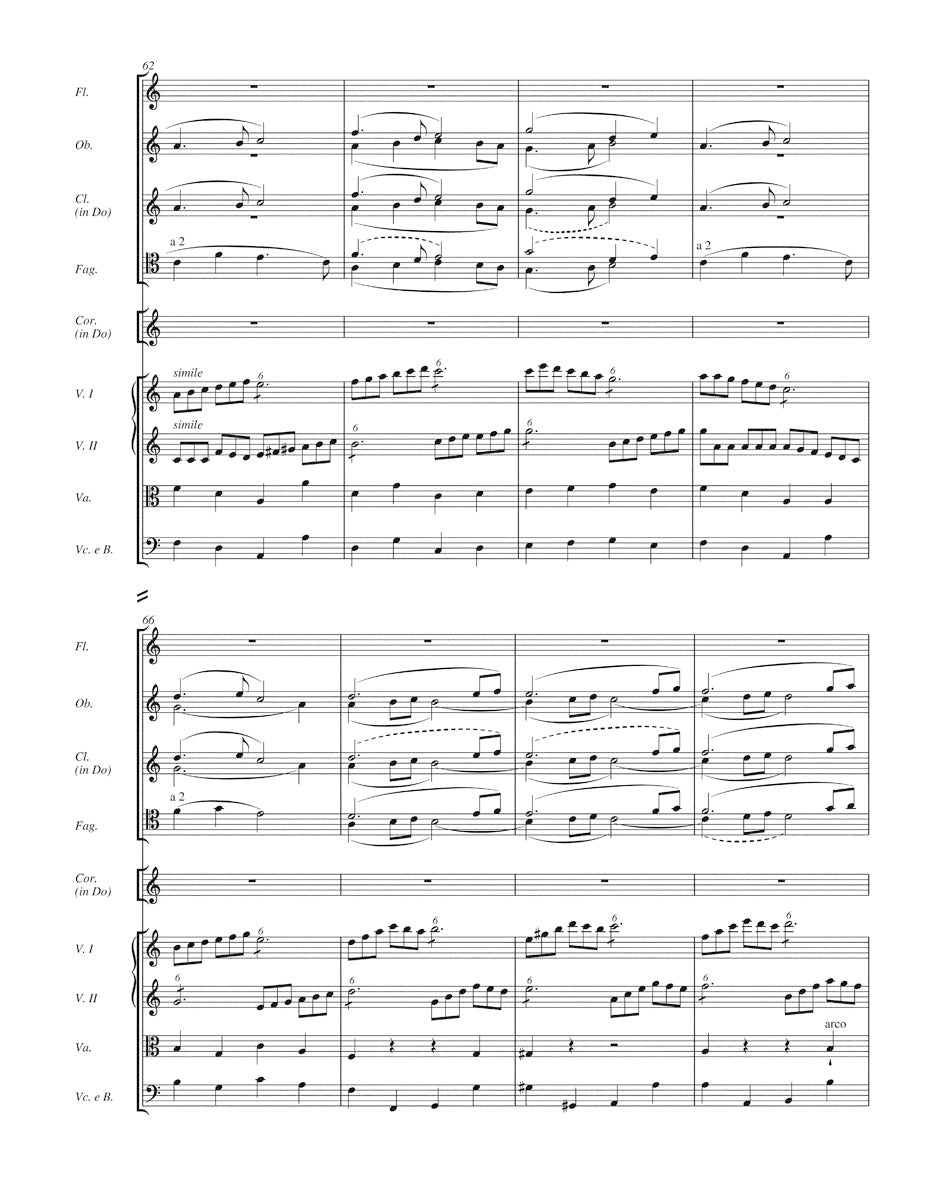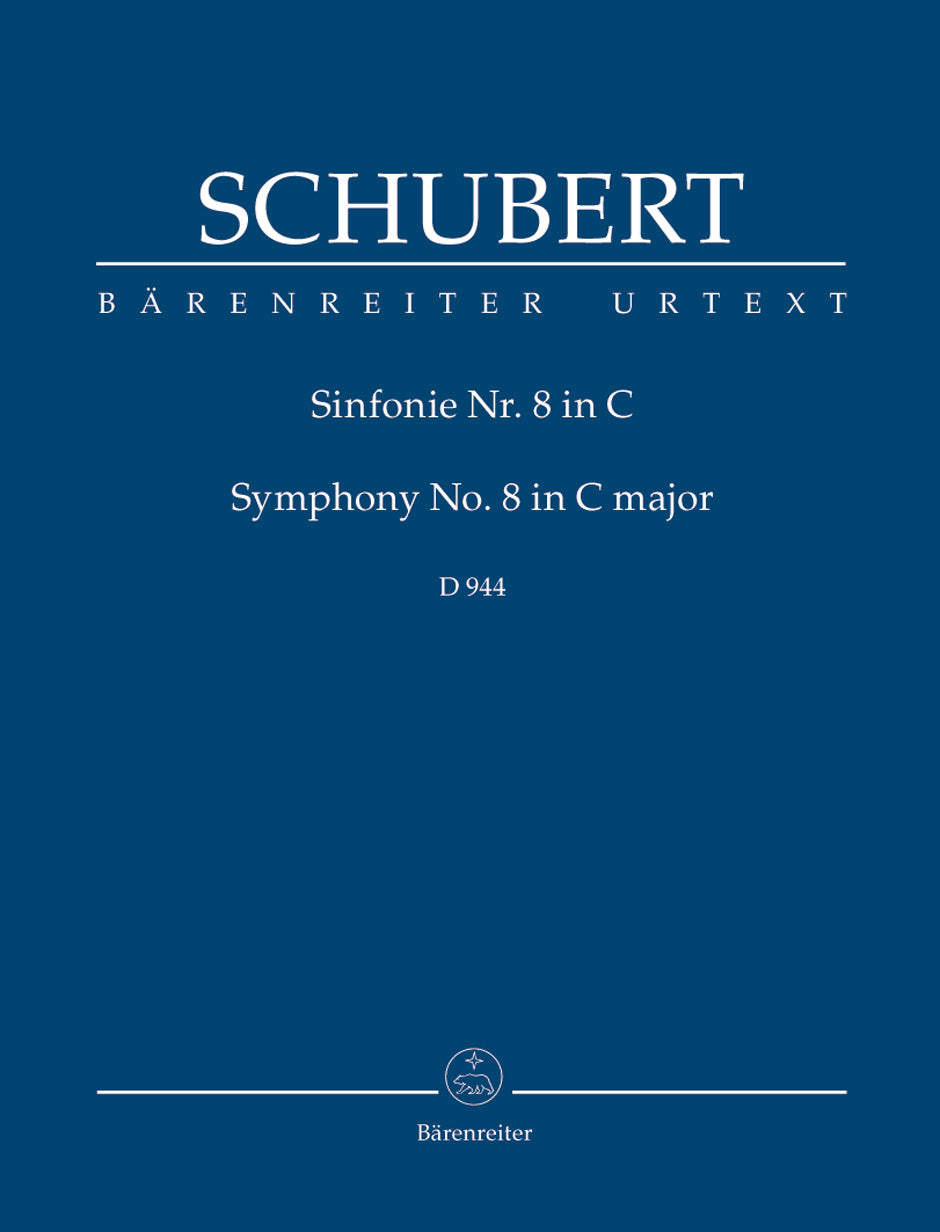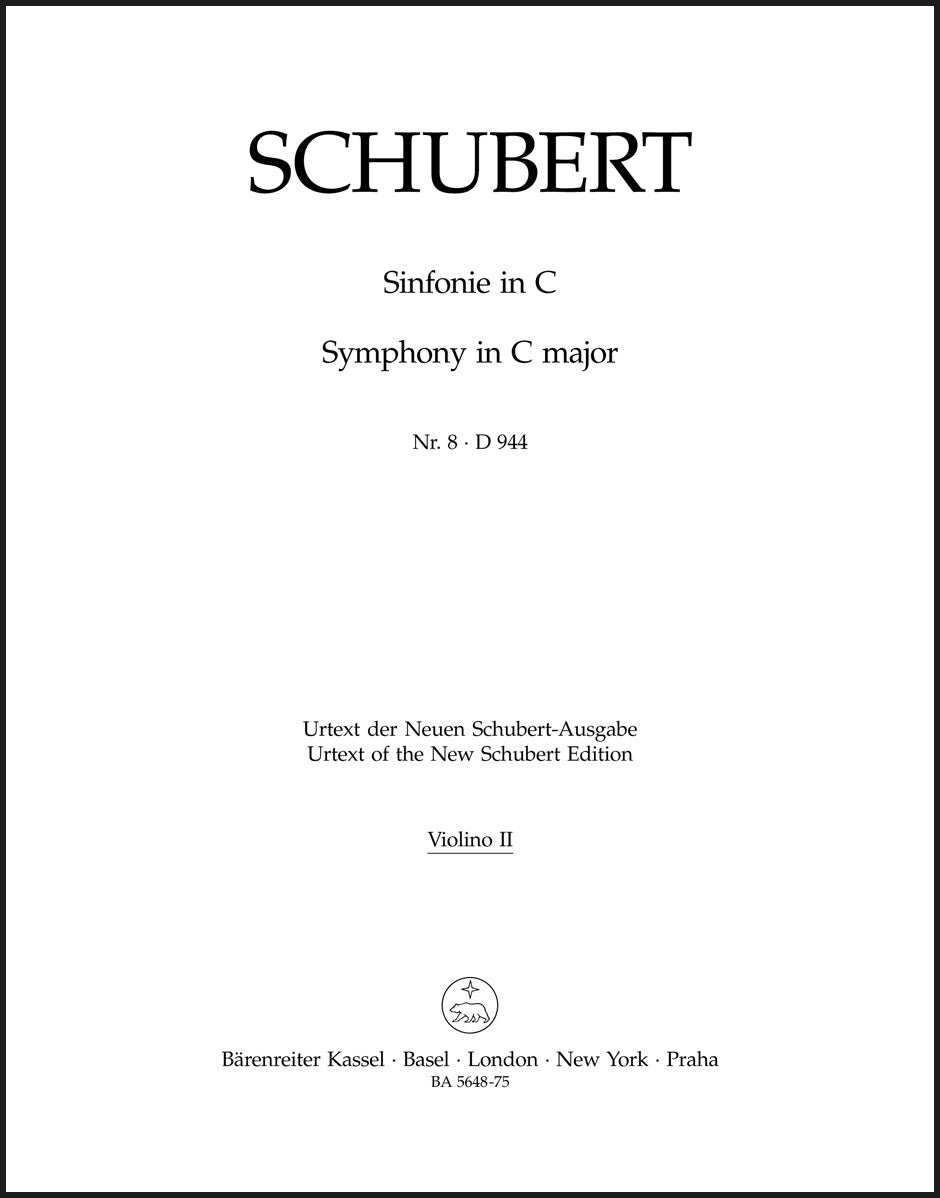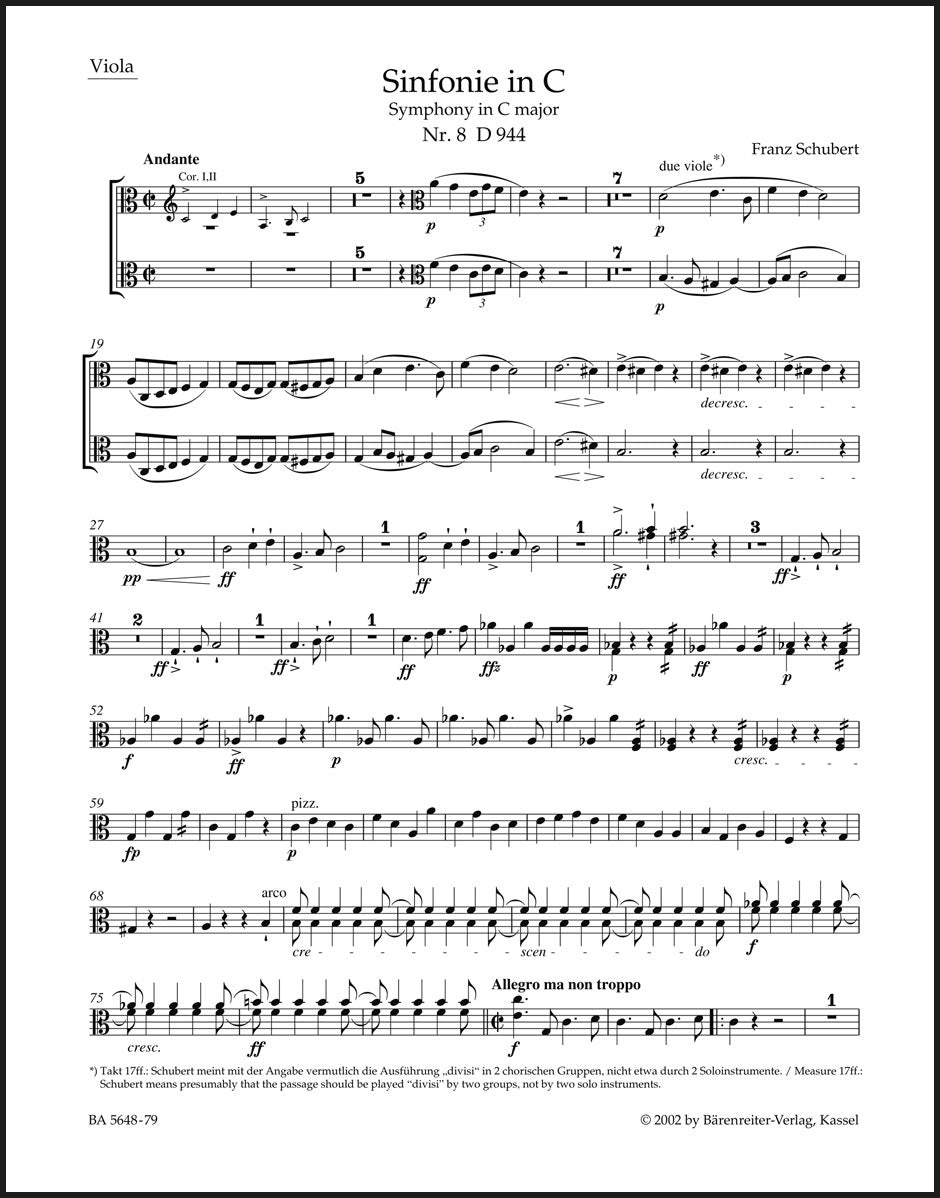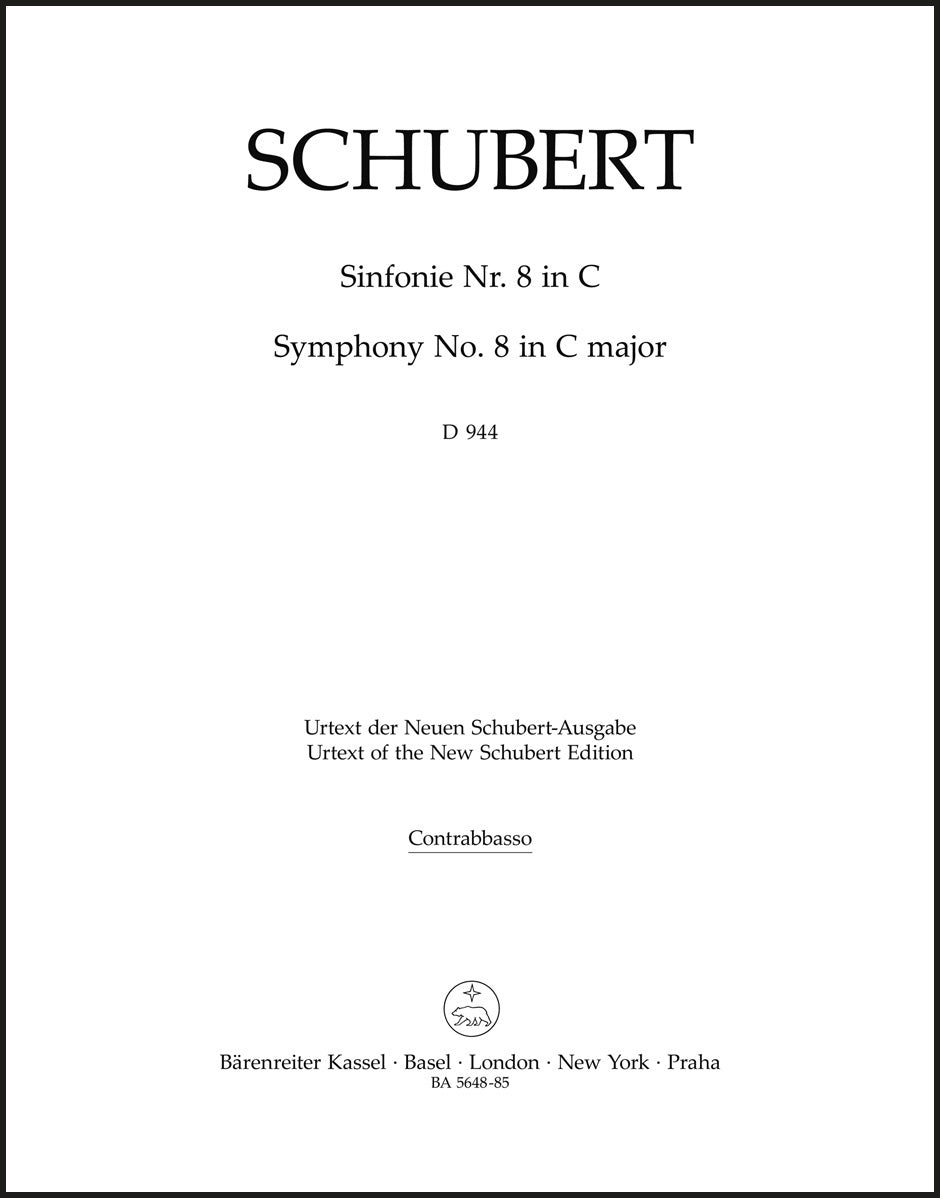Schubert: Symphony No. 8 in C Major, D 944 ("The Great")
In stock and typically ships within 1 business day.
- Composer: Franz Schubert (1797-1828)
- Editor: Werner Aderhold
- Instrumentation: Orchestra
- Work: Symphony in C Major ("The Great"), D 944
- ISMN:
- Size: 9.6 x 12.2 inches
- Pages: 282
- Urtext / Critical Edition
Description
Schubert wrote the Symphony no. 8 in C major between 1825 and 1828. in order to distinguish this symphony from his symphony no. 6, written between 1817-18, no. 8 was referred to as the "Great Symphony" in C major. After Beethoven's symphonies, this work is recognized as the most important symphony from the first half of the 19th century. It was highly lauded by Schumann and by Mendelssohn, who conducted its first public performance in 1839 in Leipzig.
Schubert himself never actually heard the symphony performed and it was long considered unperformable.
Although the source situation is comparatively clear, the editor was faced with many difficult problems. Schubert's autograph was written down in several different creative compositional stages, which he reworked over a considerable period of time. These various stages of writing, editing and correcting had to be identified and many of the numerous emendations needed to be interpreted. The results of this editorial process will surely play a relevant role in the performance of this important work. The earlier numbering of this symphony as no. 7 was based on the first Complete Edition of Schubert's works. It listed the seven finished symphonies and then the famous "Unfinished Symphony" in B minor as no. 8. At a later date, in order to be chronologically correct, was listed before the "Great Symphony" in C major was assigned the no. 9 following the "Unfinished".
Publishers use a lot of words to describe what they sell, and we know it can be confusing. We've tried to be as clear as possible to make sure you get exactly what you are looking for. Below are descriptions of the terms that we use to describe the various formats that music often comes in.
Choral Score
A score for vocalists that only contains the vocal lines. The instrumental parts are not there for reference. Generally, cheaper than a vocal score and requires multiple copies for purchase.
Facsimile
Reproductions of the original hand-written scores from the composer.
Full Score
For ensemble music, this indicates that the edition contains all parts on a single system (there are not separate parts for each player). In larger ensembles, this is for the conductor.
Hardcover
Hardbound. Generally either linen-covered or half-leather.
Orchestral Parts
Similar to a wind set, this is a collection of parts. In the case of strings, the numbers listed are the number of copies included, though generally these are available individually (often with minimum quantities required).
Paperback
When publishers offer multiple bindings (e.g. hardcover) or study scores, this is the "standard" version. If you're planning to play the music, this is probably what you want.
Performance / Playing Score
A score of the music containing all parts on one system, intended for players to share. There are not separate parts for each player.
Set of Parts
For ensemble music, this indicates that there are separate individual parts for each player.
Solo Part with Piano Reduction
For solo pieces with orchestra, this is a version that contains a piano reduction of the orchestra parts. For piano pieces, two copies are typically needed for performance.
Study Score
A small (think choral size) copy of the complete score meant for studying, and not playing. They make great add-ons when learning concertos and small chamber works.
Vocal Score
A score prepared for vocalists that includes the piano/organ part or a reduction of the instrumental parts.
Wind Set
For orchestral music, this is a collection of wind and percussion parts. The specific quantities of each instrument are notated.
With Audio
In addition to the printed music, the edition contains recordings of the pieces. This may be an included CD, or access to files on the internet.
With / Without Fingering (Markings)
Some publishers prepare two copies - a pure Urtext edition that includes no fingering (or bowing) suggestions and a lightly edited version that includes a minimal number of editorial markings.

